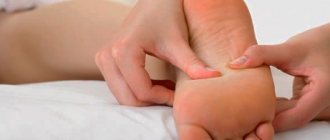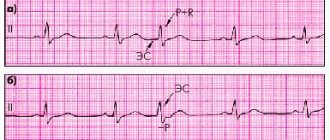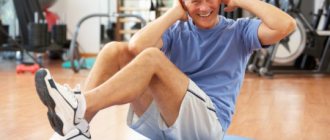The history of Nordic walking
Walking with poles appeared a long time ago. Pilgrims also used similar supports when overcoming rough terrain. In physical therapy methods, sticks have been used for a long time to improve health and rehabilitation after illness.
Close to the modern version of Nordic Walking, this type of walking first appeared in 1940 in Finland and was used by professional skiers to stay in shape outside of training.
The primacy of the method of walking with poles as an independent, amateur sport is disputed by Mauri Rapo (his method is described in the article “Hiihdon lajiosa” in 1979) and Mark Kantan (a similar article “Sauvakävely” in 1997). However, the name was patented by Mark Cantan - it was he who wrote and published the first manual on Nordic Walking.
In the late 90s, walking technique was transformed into an independent sport and became popularized throughout the world.
This unusual sport came to Russia relatively recently, but has already become an effective alternative to running. The fact is that the movements involve almost all muscle groups (up to 90%, whereas during normal walking no more than 70%), which leads to strengthening of the body as a whole, the spine and joints in particular. Moreover, the muscles of the back and upper shoulder girdle actively work, which does not happen during normal walks. Reliance on equipment allows you to reduce the load on the hip and knee joints, as well as on the foot.
The benefits of Nordic walking have been proven and undeniable, however, the technique has its limitations associated with the dosage and intensity of exercise for various diseases, and therefore requires consultation with a doctor before starting classes.
Nordic walking: why is it useful and how to do it?
Nordic or Finnish walking (Nordik Walking) is rapidly gaining popularity among amateur athletes of all age categories. Today, the sight of a person training with special sticks is no longer surprising, and the number of fans of this type of fitness is constantly growing. Why is Nordic walking becoming more and more popular and attracting not only older people, but also sophisticated fans of healthy lifestyle and sports? The answer lies in a successful combination of safety, efficiency and simplicity. All you need to do is purchase special poles and master the technique – and you can go out for training.
Who invented Nordic walking?
It is unknown when ancient people first thought of leaning on a stick when walking, but Nordik Walking in its current form was formed in the 40s of the 20th century. The basis for it was the training of skiers in the off-season, when it is impossible to fully ski. In Finland, where Nordic walking originated, sports instructors developed an original imitation - a detailed methodology and technique.
Since the mid and late 90s, when Nordic walking spread beyond Finland (where it is even included in the school physical education curriculum), its popularity has become worldwide. This was facilitated by efforts at national level: in 1997 the first real courses were organized, and at the same time the company Exel Oyj began to produce the first poles specifically for Nordik Walking. Today, the association of this sport includes more than 20 states, and training is carried out all over the world.
What are the features and advantages of Nordic walking?
Despite the fact that Nordik Walking “came out” of skiing, their techniques are not the same. Nordic walking is a typical aerobic workout and does not require high coordination or balance (like slalom or downhill). The loads in it are long-term, not too intense and uniform - this is its key feature. Nordic walking is less traumatic than running. Due to the fact that there is no flight section when walking, the joints are not subjected to sudden, point loads.
The technique of this sport also differs from ordinary walking. When Nordic walking, more muscles are involved, which increases the healing and rehabilitation effect. At the same time, the load on the body is felt lighter - of course, if you follow the training rules.
Movements should be rhythmic, arms and legs move as if walking, but with greater intensity. It is necessary to choose the appropriate pace, swing of the limbs and the size of steps so that the load is not excessive and gradually increases. By pushing off from the poles, the athlete makes it easier to move forward without reducing the effectiveness of the workout, so this type of fitness is suitable for almost all people.
What makes Nordik Walking unique?
- trains muscles throughout the body simultaneously – up to 90% of their total number is used;
- improves posture and shoulder mobility (this is important for those who work in an office and lead an insufficiently active lifestyle);
- It burns calories more efficiently than walking and stimulates the heart and respiratory system;
- does not injure joints (knees, ankles) and spine;
- improves balance and ability to move across mountainous terrain;
- reduces stress and anxiety levels, improves sleep;
- promotes socialization, etc.
Who is this sport for?
The peculiarity of Nordic walking loads is that they are insignificant and gentle - the cardiovascular system and musculoskeletal system are not affected. This is why Nordik Walking is so popular with older people - it allows you to train effectively and increase endurance without danger or excessive fatigue.
Nordic walking also helps solve problems with the shoulders and neck; it is prescribed during the rehabilitation period even after a heart attack or vascular bypass surgery. Experts have proven the restorative and therapeutic effect of Nordik Walking for correcting excess weight (even in serious stages of obesity) and treating:
- ischemia, hypertension and other cardiovascular diseases;
- obstructive and chronic bronchitis, lung diseases;
- endocrinological diseases: diabetes mellitus (type II), osteoporosis;
- depression, Parkinson's disease and other nervous diseases;
- problems with the musculoskeletal system, etc.
What equipment will you need?
The main and practically the only type of equipment is poles designed specifically for it. Their differences are that they are shorter than ski boots and have special straps (lanyards, wrist straps) that prevent you from holding the handle.
Manufacturers (the Finns Karhu and Exel, the German company Leki, the Italians Gabel, the Austrians Komperdell and other companies) offer two main types of equipment: telescopic, in two or three sections, and with a fixed length. The first type of poles is more budget-friendly, but you need to select a model so that it can withstand the load and does not fold at the wrong moment, as this can lead to injuries.
Typically, telescopic poles are made of aluminum, sometimes with shock absorbers built in to compensate for shock loads. Progressive, but also more expensive models are made from lightweight carbon fiber or composites. Fixed equipment is more reliable, however, it is very important to choose the right length - it is determined using formulas for each category of people separately. The size of the stick is determined by multiplying the person’s height by a factor of 0.66-0.70.
The equipment is completed with replaceable rubber tips or carbide ice spikes. When choosing equipment, you should pay attention to both the shaft and the strap. The pressure on the hands should be uniform, and the blood supply should not be disrupted. By choosing high-quality equipment and following the technique, you can fully appreciate all the advantages of Nordic walking and significantly improve your well-being.
Indications
There are many indications for this type of amateur sport. For example, in Germany, Nordic walking is a mandatory element of all rehabilitation programs after surgical interventions on the musculoskeletal system. Patients in German clinics who have undergone hip arthroplasty return to their normal pace of life just a month after the operation thanks to walking with poles.
The greatest effectiveness is observed in the following conditions:
- excess body weight;
- mild pathologies of the respiratory system;
- disorders of the musculoskeletal system: osteochondrosis, scoliosis in adults and children, and is also used as a prevention of osteoporosis;
- diseases of blood vessels and heart, as well as the prevention of hypertension, atherosclerosis;
- depression, neuroses;
- Parkinson's disease;
- sleep disorders;
- vegetative-vascular dystonia;
- recovery period after surgery.
In terms of load, walking is classified as cardio training, i.e., first of all, it strengthens the heart muscle, which means it requires approval from a doctor in case of diseases of the lungs and cardiovascular system. The technique has no age indications and is especially popular among people of retirement age.
Features of choosing equipment and equipment for classes
In order for the effectiveness of training to be maximum, you need:
- comfortable sportswear according to the weather;
- shoes for walking or special for running;
- sticks.
For winter activities, clothing that is used for skiing is suitable, for example, thin thermal underwear that will keep you warm in severe frost, and winter ski overalls. In summer you can wear a tracksuit, comfortable T-shirts and shorts. As for shoes, sneakers should provide good and firm support to the foot area and have a dense but flexible sole. You should also wear two pairs of cotton socks to avoid blisters.
Selection of poles
The first special sticks were released by Exel Oyj in 1997. The length of the poles is selected individually by multiplying the person’s height by a special coefficient of 0.7. All monolithic Nordic walking poles have standard sizes with a difference of 5 cm. If the resulting number is intermediate, the result should be rounded depending on the person’s physical fitness:
- a shorter length is preferable for beginners, as well as people with contraindications to significant stress on the spine;
- Longer poles place additional stress on the back and arms, so they are suitable for trained athletes.
There are also special telescopic poles on sale, which allows them to be used by all family members, and especially by children - the equipment will grow with them. The best material is carbon. Products made from aluminum alloys will be somewhat cheaper.
The equipment is expensive - a set of poles costs from 3,000 rubles, so you should buy them in accordance with your height and physical capabilities, and treat them with care and not transfer them to third parties.
How to choose the right Nordic walking poles
Rules for choosing sticks:
1. Length of poles
There are special tables and formulas for determining the optimal length of poles depending on height; in their absence, the calculation is carried out in a practical way.
If you take the poles in your hands and place them in front of you at the level of your toes, the angle of your elbow should be as close as possible to 90 degrees.
When calculating the optimal length of poles, a special coefficient is also used; for this, height is multiplied by 0.66, and the resulting value is rounded. In some cases, a coefficient of 0.68 is used, the choice depends on the coach. The first value is recommended for people who have health problems and practice Nordic walking to eliminate these problems. Athletes and healthy people should multiply their height by 0.68 when calculating the length of poles.
It is worth noting that in the first years of the emergence of Nordic walking, a coefficient of 0.72 was used; recently, the calculation formula has been constantly changing.
2. Material
This parameter is decisive for the cost; today, high-quality aluminum alloys, composite material (carbon), as well as a combination of carbon and fiberglass are used as manufacturing materials.
The more carbon the poles contain, the more expensive they are.
Aluminum products are the most inexpensive; their disadvantages include high weight, low strength and low vibration damping ability.
The poles, made from carbon and fiberglass, are lightweight, durable and perfectly dampen vibration.
Products with carbon are characterized by flexibility, strength, lightness and elasticity, which is important for the skeletal system and joints. For overweight people, it is recommended to buy poles with a high concentration of carbon; they perfectly “absorb vibrations” when walking on the ground and help reduce stress on the arms and shoulder girdle
3. Fixed or telescopic
The poles come with a fixed length and telescopic ones, which are adjusted to a certain height.
Beginners are recommended to purchase telescopic ones; the ability to change the degree of load makes them popular among athletes.
The advantages of telescopic poles include compactness, which simplifies their transportation, as well as the ability to be used by several people of different heights.
Their disadvantages include heavy weight, high cost, and short service life.
Fixed poles are characterized by greater lightness and reliability.
It is also necessary to take into account that the main criterion when choosing is comfort during use.
If you have a choice, it is recommended to try several models, walk a little with poles in your hands, and get a feel for it.
4. Equipment
Special poles have a replaceable tip, which can be made of metal for walking on the ground, or rubber for walking on asphalt or other hard surfaces.
There are also poles with snow tips designed for Nordic walking in winter.
When choosing, it is also recommended to pay attention to the handle and the lanyard glove attached to it. The handle is made of durable non-slip material, suitable for all weather conditions and temperatures
The handle is made of durable non-slip material, suitable for all weather conditions and temperatures.
Most often, natural cork is used to make the tip. There are also special “cork” handles made of special rubber, which are convenient to use and easy to clean.
The glove most often has universal sizes. The belts are made of durable material; more expensive models have a certain size.
The benefits of Nordic walking
Doctors have long proven the fact that walking is much healthier and safer for the body than running and vigorous physical activity. Moving at the same, calm pace has a positive effect on both health and emotional state.
What walking gives you:
- enrichment of blood and internal organs with oxygen;
- strengthening blood vessels and heart muscle;
- acceleration of metabolic processes;
- improved digestion;
- activation of the elimination of toxic substances;
- lowering cholesterol levels;
- strengthening the immune system;
- improvement of muscle tone;
- burning fat deposits;
- improved balance and coordination;
- healing of joints and spine;
- great mood and positive.
The most important thing is the regularity of classes, skipping which is permissible only for health reasons.
Technique
Like any sport, before starting a lesson you should do a warm-up - swinging your arms and legs, flexing and extending your body, rising on your tiptoes for 2-3 seconds, neat jumping from foot to foot and on both legs. You can use special exercises with sticks: bending to the right and left with raised arms holding the stick, bending forward with emphasis on the sticks, etc.
So, how to Nordic walking:
- The main element of the training is the step.
- The main rule: left hand with a stick - right leg (heel), and vice versa: right hand - left leg, i.e. there should be a counter move.
- The stick is located on the side near the leg, slightly at an angle.
- When the stick touches the ground, you should take a step: the foot is placed on the heel, then rolled onto the toe. But you should not place your feet on the entire surface of the foot at once.
- Your legs should be slightly bent at the knees while walking.
- During the movement, the arms bend slightly at the elbows and move them up and down when pushing off the surface. The arm is raised at an angle of 450 in the upper position, and the “lower” arm is moved back to the level of the pelvis.
- You cannot lean on sticks with significant effort! This creates additional stress on the musculoskeletal system.
How to hold sticks
In fact, they hold themselves on their hands thanks to special, very strong and reliable loops. The loops are similar in appearance to the bells of gloves and, with the help of wide stripes, cover the bases of the thumbs, which prevents incorrect movements of the hand. You need to hold the equipment freely, without straining your hands, parallel to each other. When overcoming a hard surface, rubber tips are put on the poles for convenience; it is more convenient to pass through soft areas simply by pushing off with a spike.
So, before class, you need to put your hand through the loop, adjust the diameter using the clasp and secure the loop so that the wrist area is not pinched. This way the sticks won't fall out of your hands.
Nordic walking technique for beginners: step by step
Race walking is similar to regular walking. The only difference is that you take longer strides and use poles to transfer some of your weight and provide a little extra traction.
- When you step forward with your left foot, lean on your right stick, and vice versa.
- The stick should touch the ground at the same time as your foot.
- Keep your back straight, shoulders slightly lowered.
- Try to walk mindfully rather than just strolling.
- Hold the poles firmly, but at the same time not too tightly, otherwise your arms will quickly get tired and your wrists will hurt.
- The length of your arm swing determines the length of your stride, so don't throw your poles too far forward. The farther you bring the poles, the more intense the load you will receive.
Nordic walking poles: how to choose the right ones
Walking poles come in different designs. They are typically lightweight, adjustable, have wrist straps and metal tips with removable rubber coating so you can use them on the pavement.
The poles should become like an extension of your arms, so make sure they are suitable for your height. To correctly calculate the length of the pole, use the following formula:
Basic formula for calculation
Your height in centimeters multiplied by 0.68 For example, 164 x 0.68 = 111.5
You can fine-tune the height of your poles based on the length that suits you. Namely, in such a way that your elbows are bent at an angle of 90 degrees when you lean on the stick. To avoid having to buy new straps or tips as the old ones wear out, initially purchase good quality poles. Choose a manufacturer that also produces replacement parts.
Nordic walking shoes
Basically, you can walk in almost any comfortable shoe. But durable, supportive, and soft sneakers or boots will make your walk more comfortable. If you plan to train outside the city in the fresh air in any weather, make sure that your shoes are warm enough, waterproof and can be worn with warmer socks if necessary.
Clothes for Nordic walking
You can wear almost anything you want. The main thing is to dress appropriately for the weather, and also take into account the fact that you will feel warmer during your workout. Ideally, try wearing several layers of clothing so that you can take something off when you want. If you plan to train in inclement weather, bring warm, dry clothing for your shift.
Contraindications and disadvantages of the technique
- Acute diseases and exacerbations of chronic pathologies;
- Serious joint diseases, osteoporosis;
- Severe angina pectoris;
- Hypo- and severe hypertension;
- Primary recovery period after surgery (when bed rest is indicated).
The disadvantages of this sport are that it is somewhat dependent on weather conditions. Walking can be practiced throughout the year, but in reality, heavy rain, blizzards or snowfall make movement much more difficult and can adversely affect your health. Walking in the gym is difficult, and skipping classes is not recommended.
How to choose Nordic walking poles
When choosing sticks, it is advisable to be guided by the following criteria:
- Comfortable handles to prevent chafing of your brushes.
- The strap should not be tight, disrupting normal blood circulation.
- The stick should be light enough and strong enough.
- It is advisable to include a rubber tip and a carbide spike in the kit for unhindered movement on different surfaces, as well as increasing the service life of the stick.
- The straps should provide good support for the hands without causing the need to squeeze the handles.
An important point when choosing a walking pole is the correct calculation of its length. The length can be calculated depending on the degree of physical fitness using the formulas:
- with poor physical fitness, we multiply the height by a factor of 0.66;
- with an average and good level of physical fitness, we multiply the height by a factor of 0.68;
For example, with a height of 1.75 m and decent physical shape, a stick with a length of approximately 115-120 cm (175 × 0.68 = 119 cm) is required. The given recommendations will allow you to practice Nordic walking comfortably and effectively.
How to walk correctly for maximum effect
It is recommended to find a companion or go with the whole family - this motivates, improves efficiency and mood in general. There are entire schools and clubs of Nordic walking fans who take common walks every day.
- You should eat an hour and a half before class.
- You need to walk at a fast pace, but do not start running. The walk should be comfortable, not accompanied by abdominal pain, shortness of breath or rapid breathing.
- Increase the load only gradually.
- While walking, you should not lower your head down, your shoulders should be relaxed and freely lowered, and your posture should be straight. You need to try to think about good things and smile.
- Walks are best organized in environmentally friendly places, where there is a lot of vegetation and no transport. The best option is hilly paths of parks and squares.
- The duration of one lesson is at least 40 minutes. How long is the maximum time to walk? It depends on your fitness level, but you definitely shouldn’t exceed 60-90 minutes.
- While walking, you can drink clean water in small sips.
- After your walk, you should do a couple of leisurely stretches or just a few deep breaths.
Celebrities who have been conquered by Nordic walking
Reading about Nordic walking, many people think about how wonderful and effective it is. It would be great to go get your inventory right now. But this doesn't happen. You continue to sit on the couch, while only dreaming of healthy joints and a toned tummy. All this is the result of a lack of motivation. To make you want to take care of yourself and also start Nordic walking, we provide a list of celebrities who maintain their beauty and health with the help of Nordic walking, namely:
- Alla Dukhova (head of the Todes school).
- Ekaterina Strizhenova (Russian film and theater actress, TV presenter).
- Claire Balding (famous BBC journalist).
- Bear Grills (famous TV presenter).
- Michelle Obama (wife of former US President).
- Claudia Schiffer (American actress).
- Steve Jobs (founder of Apple).
It is worth noting that you should not expect quick results from Nordic walking. After a week, your shortness of breath will disappear and you will feel a surge of strength. The figure will be transformed in six months. But this result is worth your time and effort. In just 6 months you will look in the mirror and you will certainly see a beautiful body and a happy face of a healthy person.
Nordic Walking and weight loss - how it works
Proper Nordic walking, carried out regularly, leads to a gradual loss of extra pounds. When walking at an average or fast pace, about 10 calories are burned in 1 minute. Almost all muscles are also pumped. While walking, you can “work” on problem areas. So, if you walk and keep your abdominal muscles moderately retracted, you can get rid of fat deposits in this area. Overcoming rough terrain with upward climbs perfectly pumps up the leg muscles. If you tighten your buttocks and try to mentally hold a coin between them, they will acquire a beautiful shape.
Common mistakes
Nordic walking with poles is not easy for everyone, and some do not see any positive changes in their health. This may be due to some errors:
- Using homemade sticks or equipment from other sports;
- Incorrect holding of sticks (crossing them behind your back);
- Rotate the body while raising the arm to make a pushing movement;
- Using the force of the hand rather than the elbow during push-off;
- Using uncomfortable shoes.
Nordic Walking is an enjoyable sport that is accessible to everyone and has a positive effect on health, mood and appearance!
Author:
Sabuk Tatyana Leonidovna hygienist, epidemiologist
Why is Nordic walking better than other sports?
- You do not depend on any schedules or class schedules.
- You can walk almost anywhere. Of course, it is better to choose forests or parks for walking.
- You won't need to be embarrassed about your appearance or age. When doing Nordic walking, you can choose the clothes, the time and the place where you will avoid unnecessary attention.
- You don't need any company. Whether you go with someone or alone is your decision.
- Nordic walking classes do not require large investments. All you need is comfortable clothing, season-appropriate shoes and suitable poles.
- Safety. Some sports can make your health worse. They can blow your heart, tear your back, or get injured. Moderate Nordic walking is perhaps the safest sport.
Moderate Nordic walking is perhaps the safest sport.










